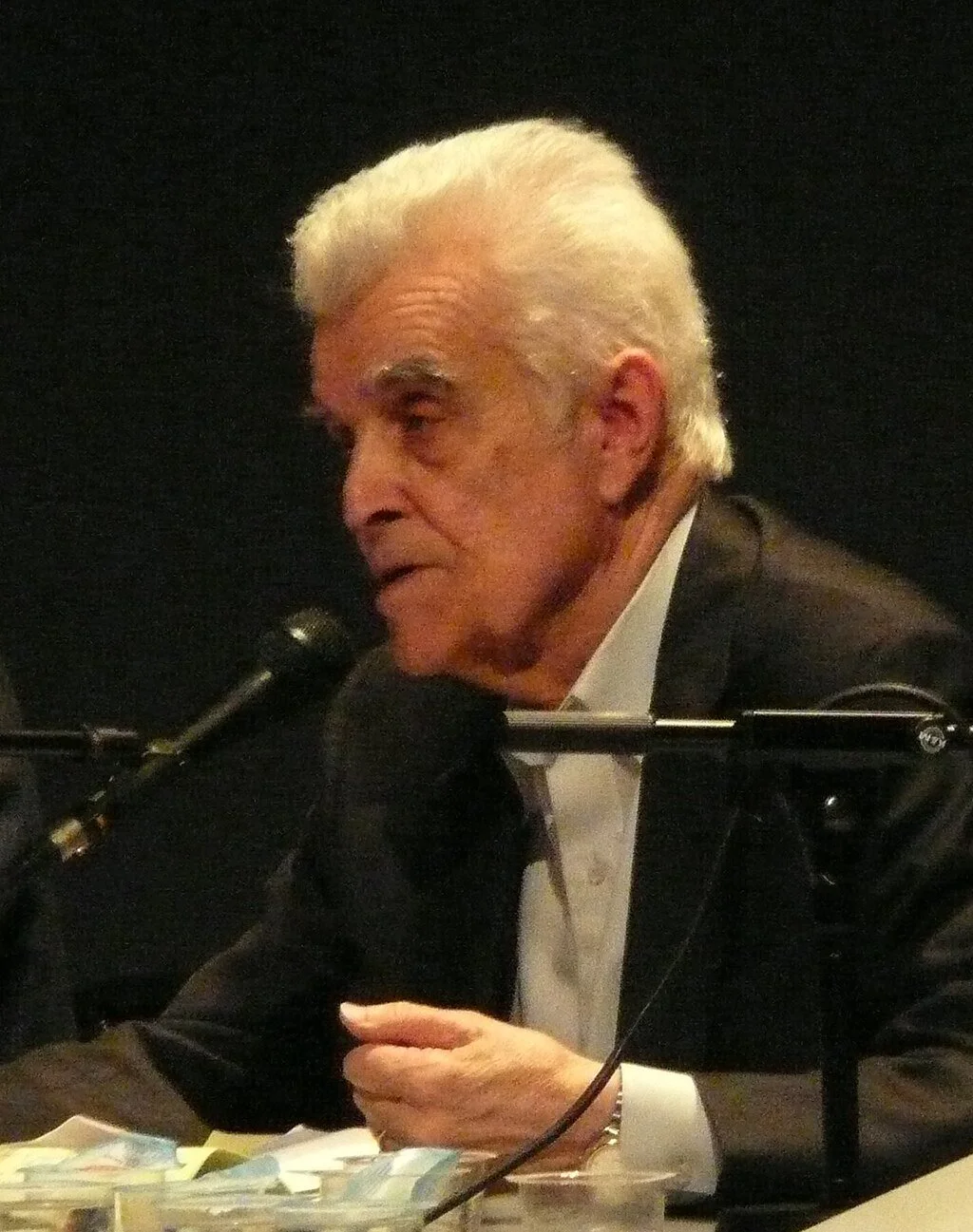René Girard, Modernity, Apocalypse, Part I
How much do you have to let go of to become truly human? This might appear an opening gambit for a discussion of a personal therapeutic nature, but in reality, it’s a contemporary challenge for humanity itself. It is a question of political theology; indeed, it is a meta-anthropological question. The thought of René Girard leads inexorably to such a depth of questioning. Girard’s generative anthropology rises from a discovery of foundational violence, and constantly illustrates a desperate contemporary need to somehow free ourselves from this violence. The character of this anthropological questioning makes Girard a pre-modern, even archaic thinker—and at the same time devastatingly modern, and then truly postmodern, to a crucially challenging degree.
It seems appropriate to make these statements about Girard—a Frenchman naturalized in the U.S. and pursuing his intellectual career here—in an American journal concerned with the nature of modernity. If Girard’s generative anthropology has not been discussed in this space before then it seems past due to do so. Girard was intensely aware of the question of modernity, particularly in respect to one of its leading standard-bearers, Nietzsche. He saw Nietzsche as vitally sensitive to an imputed anti-modern character of Christianity, making Nietzsche, paradoxically, a herald of the profound contemporary agency of the Christian gospel. Nietzsche displayed a relentless hostility to Christianity on the grounds that it gave perverse value and social status to the weak. Girard said he was absolutely correct in his assessment of the role of Christianity, and to a degree significantly beyond everyone else. Girard has called the message of Christianity “a slow inexorable plague” disabling and neutralizing “the gods of violence,” making their social functioning grind to a halt. In this sense, Girard is an inverted Nietzschean, echoing his insights but in the opposite direction. Instead of the absolute of power, we have the absolute of the victim: “The concern for victims has all the attributes of a genuine Absolute. It can withstand all assaults; it is the one principle invulnerable to all possible forms of skepticism . . . We can see that our whole history seems to converge upon that theme...”
William Holman Hunt, The Scapegoat, 1854.
What results, however, is a type of modernity that is intrinsically unstable, with each individual or group competing to establish its claim as the most offended party. A kind of “arms race” of offense results, and the collateral undertow of anger and violence is never far away. Girard offered no explicit prescriptions for this beyond a kind of universalized moral conversion: “If all mankind offered the other cheek, no cheek would be struck. But for that to be possible, it would be necessary for each person separately and all people together to commit themselves irrevocably to the common purpose.” In this respect, Girard’s modernity seems thin and conflicted—something doomed by its catastrophic in extremis character. “Either we are moving ineluctably toward nonviolence, or we are about to disappear completely.”
In sympathy with this, Girard’s texts are filled with the use of “modern” in a generally pejorative way. The word becomes a shorthand for a lazy intellectual attitude that assumes the superiority of its critical thought and dismisses religion as irrational and without genuine logic, foisting upon humanity ridiculous shibboleths and unwanted rules. Talking of desire, he says:
“Modern people still fondly imagine that their discomfort and unease is a product of the strait-jacket that religious taboos, cultural prohibitions and, in our day, even the legal forms of protection guaranteed by the judiciary system place on desire.”
And then, in still more radical form: “All modern thought is falsified by a mystique of transgression, which it falls back into even when it is trying to escape.” This refers to the catastrophic double-bind of present humanity, freeing itself from traditional prohibitions, but at once encountering the prohibition of the mimetic other from whom the individual has first learned what to desire. The more we rebel against restricting hierarchies and baseless norms, the more we find the model-obstacle as the new law, the hidden author of my liberated desire who then appears inexorably to block my path as my rival.
René Girard during a colloquium in Paris "End of war and terrorism," November 2007.
Our contemporary world is absolutely exceptional for allowing a large measure of such free-floating desire to operate among humans, sustained by continually expanded economic activity as well as, lately, the fissile connections of social media. Girard, however, by no means advocated a return to a golden past of rules and order. “From the moment cultural forms begin to dissolve, any attempt to reconstitute them artificially can only result in the most appalling tyranny.”
In this ultimate sense, then, Girard remains paradoxically modern. And he explicitly underlines this in relation to his own core profession of thought:
“When considered as a whole, modern research (of which our own project constitutes only a new, more advanced stage), can be seen as part of a much larger dynamic, that of the first society to become capable of deciphering a causal sequence and revealing it to be one of arbitrary violence [i.e. foundations in the surrogate victim or scapegoat]—whereas in the history of all humanity this causal sequence has never appeared in any form other than that of mythology.”
Girard is thus claiming to be modern in a full technical sense, much like all the great ethnographic and anthropological researchers of the nineteenth and early twentieth century who sought some universal description and theory of religion. He follows patterns both of critique and genealogy in his work. In his first book, Deceit, Desire, and the Novel (1961), he brought to light the deep structure of mimetic desire in nineteenth-century novels, and in his subsequent work, Violence and the Sacred (1972), he traced the origins of human culture in violence and sacrifice and the prohibitions that these origins generate. He sees himself as continuing the traditional line of religious research and, in fact, bringing it to its conclusion. Girard is, therefore, to be understood as resolutely modern, while at the same time offering a stringent, even terminal, critique of the modern. He fits the schema of the modern, but because of the prismatic attitude he demonstrates—looking at the terrain of exponential desire with its continually rolling offense—he necessarily ends with an “apocalyptic” viewpoint, one that decisively sets him apart from other commentators. Nowhere is this on display more than in his final work, Battling to the End (2009), where he speaks of an “implacable law of escalation to extremes.” The power of nations and other forces mobilizes the one against the other in ever more deadly spirals of confrontation. In this vision there is very little human hope, and in this sense, Girard must count as “post-modern” in a uniquely catastrophic way.
Pablo Picasso, Dove, 1949.
Nevertheless, the story does not end there. Far from it! Girard’s postmodernism cannot help but include the unique transcendence he discovers in the biblical text. What he calls the “Judeo-Christian” scriptures are the source of revelation—not simply of human violence, but of a meaning that reaches far beyond this into the historical shock of divine nonviolence. His own text necessarily shares in this positive revelatory momentum of the scriptures. In my following essay, I will try to give a sense of this singular “postmodernism,” full of the possibility of human change.


